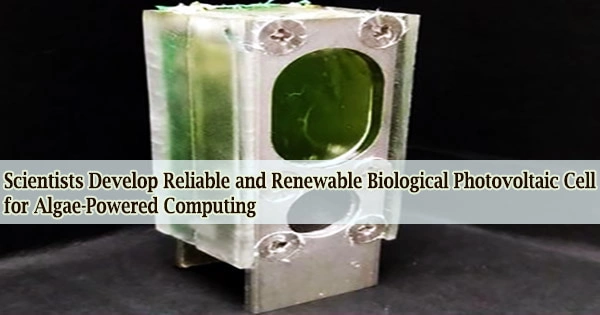A common type of blue-green algae has been utilized by researchers to continually run a microprocessor for a year and counting using only water and ambient light. Their approach has the potential to be a dependable and sustainable solution to power small appliances.
Synechocystis, a non-toxic algae, is used in the system, which is about the size of an AA battery and uses photosynthesis to naturally harvest energy from the sun. A microprocessor is powered by the little electrical current that is created by this interaction with an aluminum electrode.
The components of the system are often accessible, affordable, and recyclable. In order to power a significant number of small devices as part of the Internet of Things, it may be simply reproduced hundreds of thousands of times. According to the researchers, it is likely to be most helpful in rural or off-grid settings, where even little amounts of power can be highly helpful.
“The growing Internet of Things needs an increasing amount of power, and we think this will have to come from systems that can generate energy, rather than simply store it like batteries,” said Professor Christopher Howe in the University of Cambridge’s Department of Biochemistry, joint senior author of the paper.
He added: “Our photosynthetic device doesn’t run down the way a battery does because it’s continually using light as the energy source.”
An Arm Cortex M0+, a microprocessor frequently found in Internet of Things devices, was powered by the apparatus in the experiment. After six months of nonstop power production, the results were submitted for publication. It worked in a home setting with semi-outdoor circumstances under natural light and related temperature changes.
The growing Internet of Things needs an increasing amount of power, and we think this will have to come from systems that can generate energy, rather than simply store it like batteries. Our photosynthetic device doesn’t run down the way a battery does because it’s continually using light as the energy source.
Professor Christopher Howe
The study is published today in the journal Energy & Environmental Science.
“We were impressed by how consistently the system worked over a long period of time we thought it might stop after a few weeks but it just kept going,” said Dr. Paolo Bombelli in the University of Cambridge’s Department of Biochemistry, first author of the paper.
Due to photosynthesis, the algae does not require feeding because it produces its own food. Even in the absence of light, which is necessary for photosynthesis, the gadget can continue to generate energy.
The reason, according to the researchers, is that the algae continues to produce an electrical current while processing some of its food in the absence of light. The Internet of Things is a massive and expanding network of electronic gadgets, each of which consumes very little power and gathers and distributes real-time data online.
Many billions of devices, ranging from smartwatches to temperature sensors in power plants, are a member of this network thanks to low-cost computer chips and wireless networks. By 2035, this number is projected to increase to one trillion gadgets, necessitating a massive amount of portable energy sources.
According to the researchers, utilizing lithium-ion batteries to power trillions of Internet of Things devices would be impracticable since it would require three times as much lithium as is generated globally each year. Additionally, toxic compounds with negative environmental consequences are used in the production of conventional solar devices.
The University of Cambridge and Arm, a business that is a leader in microprocessor design, worked together on the project. The board, the data-collection cloud interface, and the incredibly efficient Arm Cortex M0+ testchip were all created by Arm Research.















